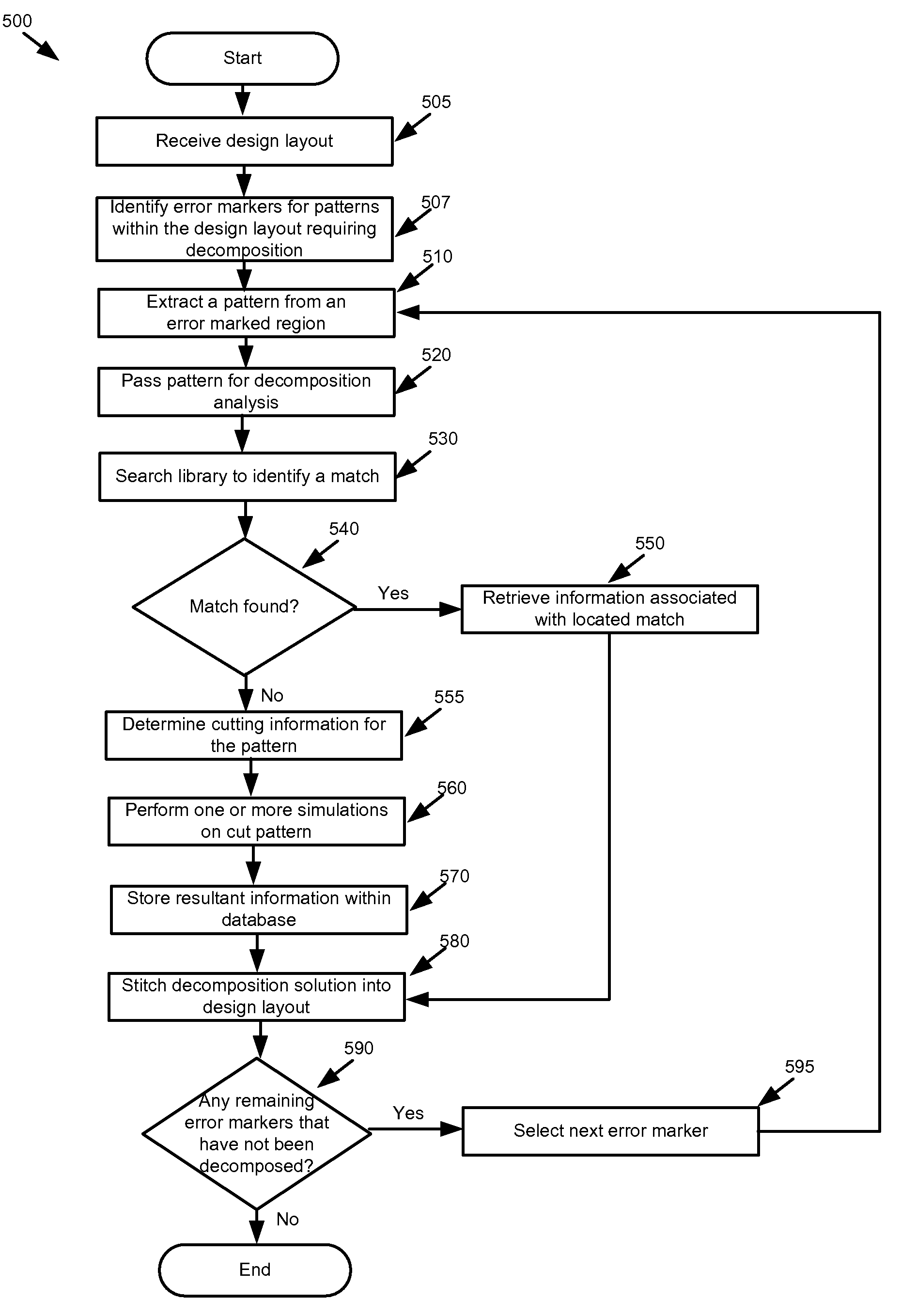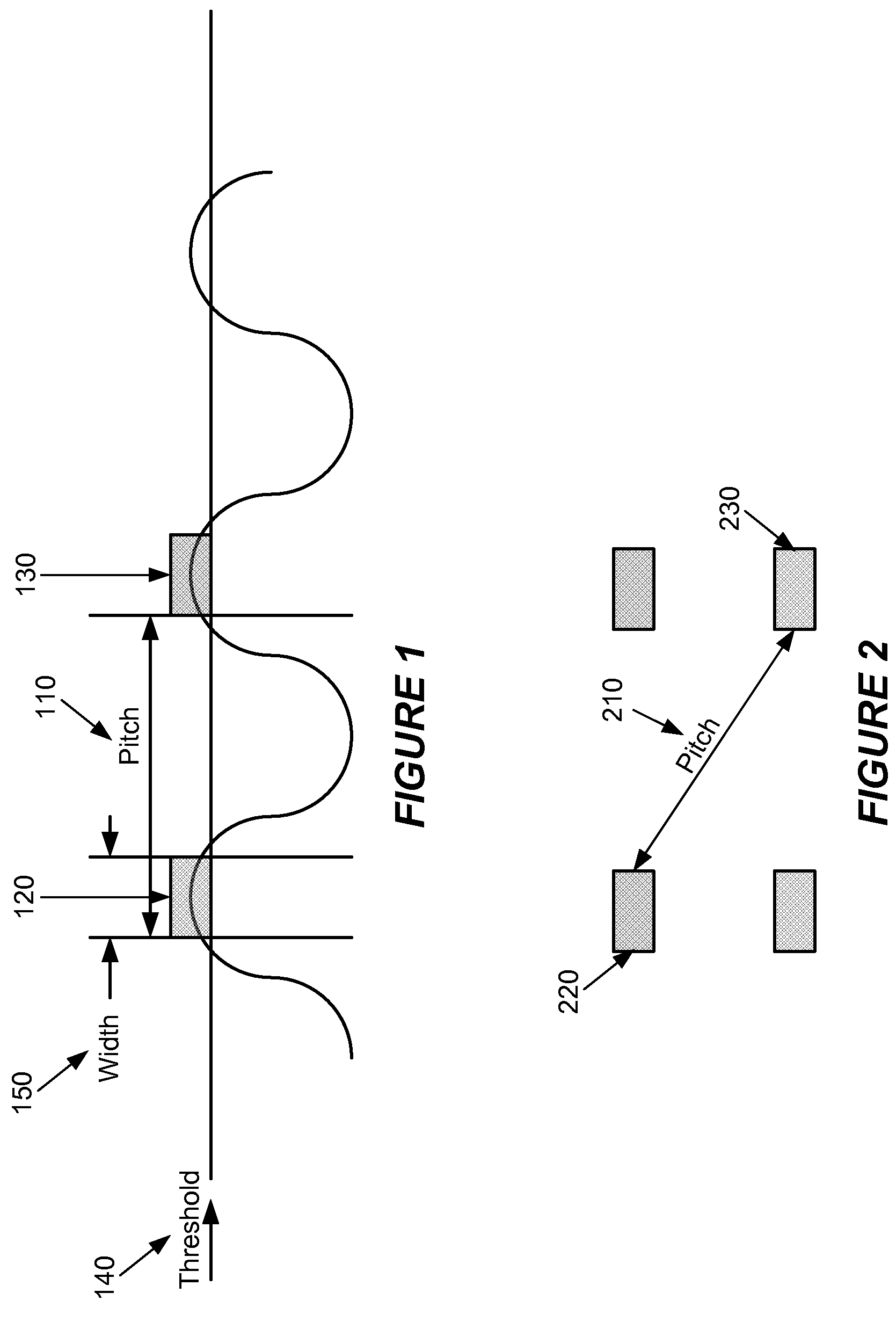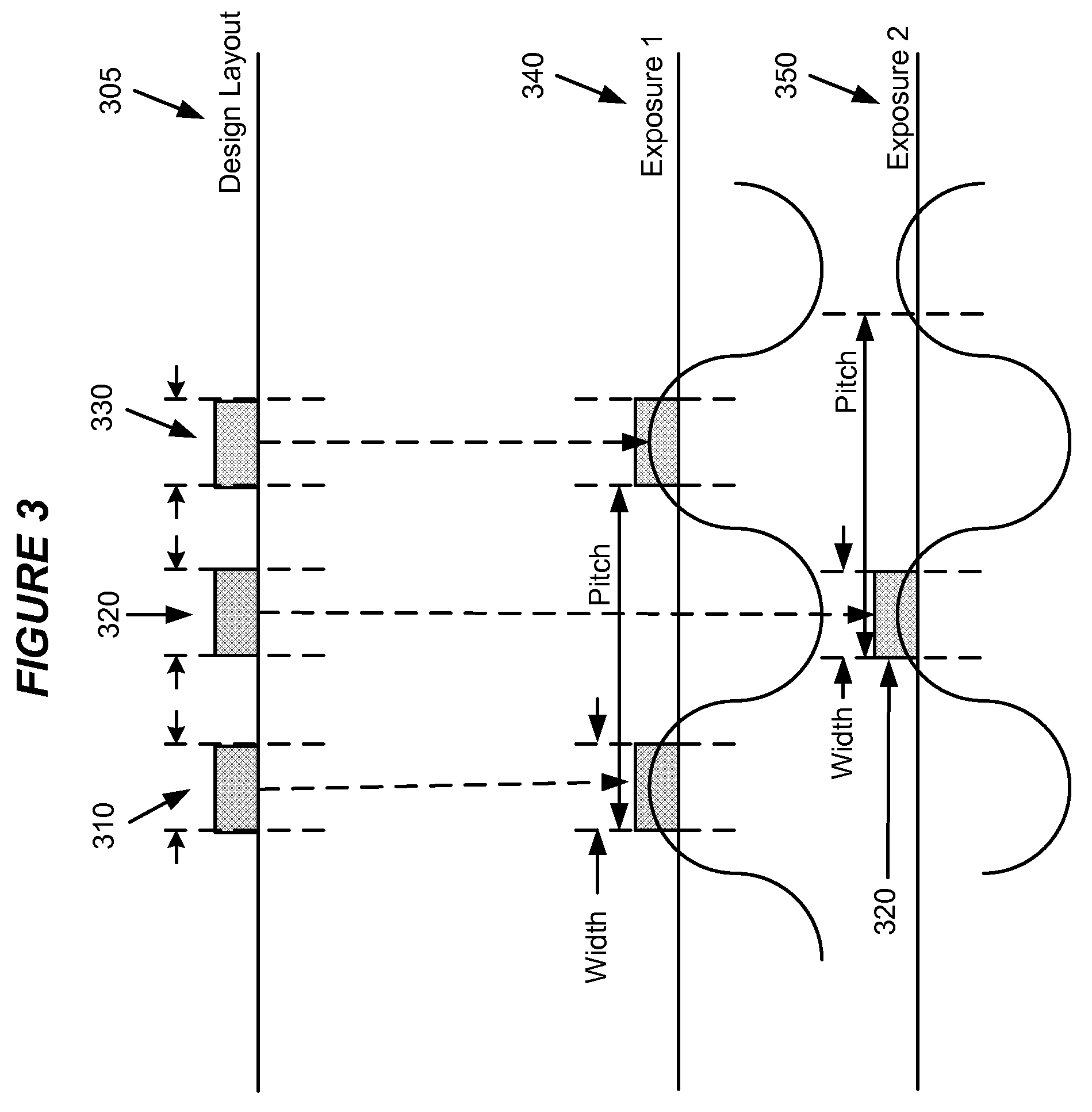System and method for multi-exposure pattern decomposition
a pattern decomposition and pattern technology, applied in the direction of error detection/correction, cad circuit design, instruments, etc., can solve the problems of limiting the effectiveness of current photolithographic processes, the pitch is too small, and the smallest size of any feature that can be created on a wafer is severely limited by the pitch. , to achieve the effect of reducing the number of photo masks, reducing the number of exposures, and saving costs
- Summary
- Abstract
- Description
- Claims
- Application Information
AI Technical Summary
Benefits of technology
Problems solved by technology
Method used
Image
Examples
Embodiment Construction
[0054]In the following description, numerous details are set forth for purpose of explanation. However, one of ordinary skill in the art will realize that the invention may be practiced without the use of these specific details. In other instances, well-known structures and devices are shown in block diagram form in order not to obscure the description of the invention with unnecessary detail.
I. Overview
[0055]Some embodiments provide a method and system for optimally decomposing patterns of features within a particular layer of a design layout that do not meet specified manufacturing constraints. In some such embodiments, these patterns are decomposed into multiple geometric shapes for printing in two or more exposures. Together, the two or more exposures print the patterns and satisfy the manufacturing constraints.
[0056]To facilitate pattern decomposition, some embodiments provide one or more geometric rules to identify error markers for patterns within the design layout that do no...
PUM
 Login to View More
Login to View More Abstract
Description
Claims
Application Information
 Login to View More
Login to View More - R&D
- Intellectual Property
- Life Sciences
- Materials
- Tech Scout
- Unparalleled Data Quality
- Higher Quality Content
- 60% Fewer Hallucinations
Browse by: Latest US Patents, China's latest patents, Technical Efficacy Thesaurus, Application Domain, Technology Topic, Popular Technical Reports.
© 2025 PatSnap. All rights reserved.Legal|Privacy policy|Modern Slavery Act Transparency Statement|Sitemap|About US| Contact US: help@patsnap.com



